Vibrant colors of traditional craft villages in spring
Belonging to the tourism route “Experience traditional cultures in a wonderland”, the incense-making village, traditional paper-making village and forging village in Phuc Sen commune (Quang Hoa District) are known for their long history and unique products featuring quintessence of ethnic groups and typical local cultures. When spring comes, traditional craft villages prepare for a new year with excitement. Practicing traditional crafts provides locals with jobs and improves their income, it also creates unique products to meet the needs of local people and tourists.
Spring comes to the forging village
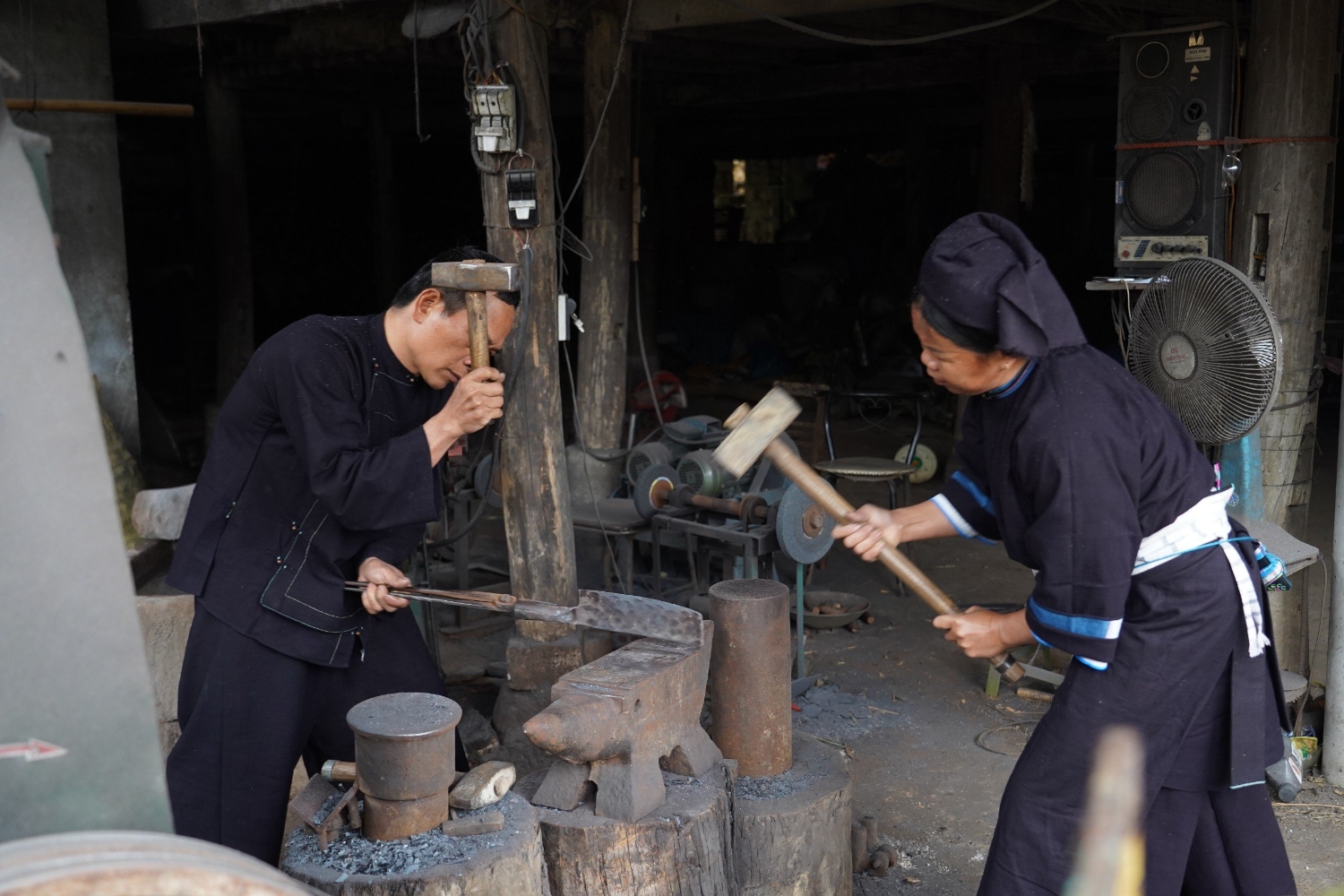
In the last days of the year in Phuc Sen commune, the craft villages are filled with an increasingly bustling atmosphere of laboring. The number of orders that each smithy receives these days doubles that of normal days so the blacksmiths are more busy finishing their products. Everywhere in the village, or down the alleys is full of hammering sound blending with the sound of waves of laughter and chatting of the blacksmiths.
The traditional blacksmithing techniques include many stages. This is hard work that needs collaboration; a smithy normally has 2-3 blacksmiths working together, including a main worker and his assistants. Thereby, each smithy ensures the close collaboration. In the village, the forgefire is always on, people almost work all the time; on the road is the hustle of vehicles carrying materials for manufacturing and fine products for selling.
Luong Thanh Tung, Pac Rang village, Pguc Sen Commune (Quang Hoa District) said that: “Every year, Tet is the time when they receive large quantity orders for family use or presents. Therefore, for nearly a month now, my family have been working hard to ensure the delivery of the products to customers on time. However, it doesn’t mean we can work in a perfunctory manner. Because these are traditional products that require the meticulousness of the blacksmiths and high quality, so we have to concentrate on our work to come up with satisfactory products and also to keep customers coming back”.
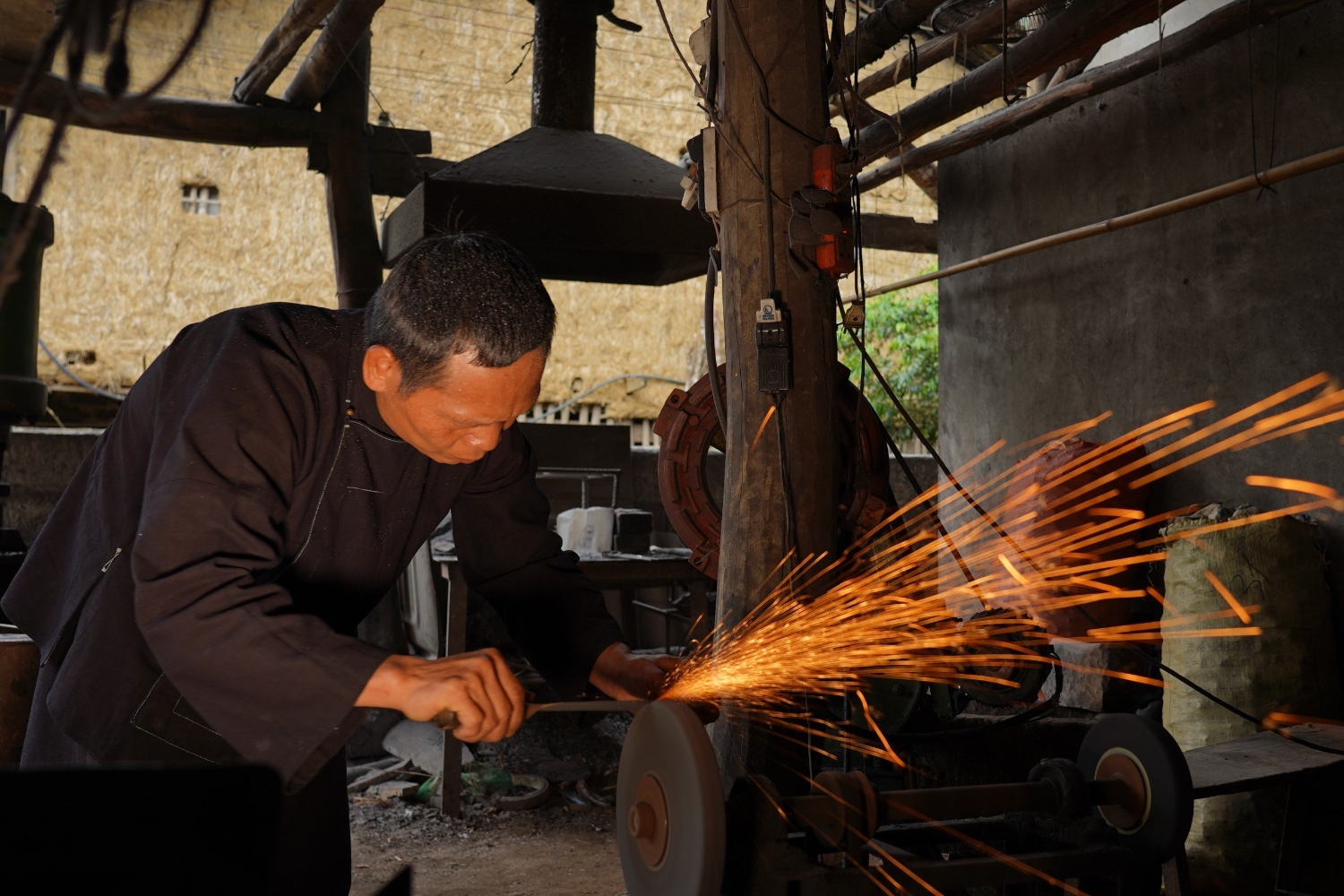
Spring colors bloom in the incense village
Coming to Phja Thap incense village (Phuc Sen Commune) in rare glimpses of gentle sunlight in winter, right from the entrance of the village, you can feel the light scent of incense-making materials blending with the scent of wet incense sticks being dried on bamboo mats. The birds singing together with hurried footsteps of people transmitting incense sticks to the drying place add more excitement for the villlage in Tet season. On these days, the atmosphere of laboring in the village gets busier and busier, the villagers seem to put all their concentration into their work so that their products will serve many households when the lunar new year comes.
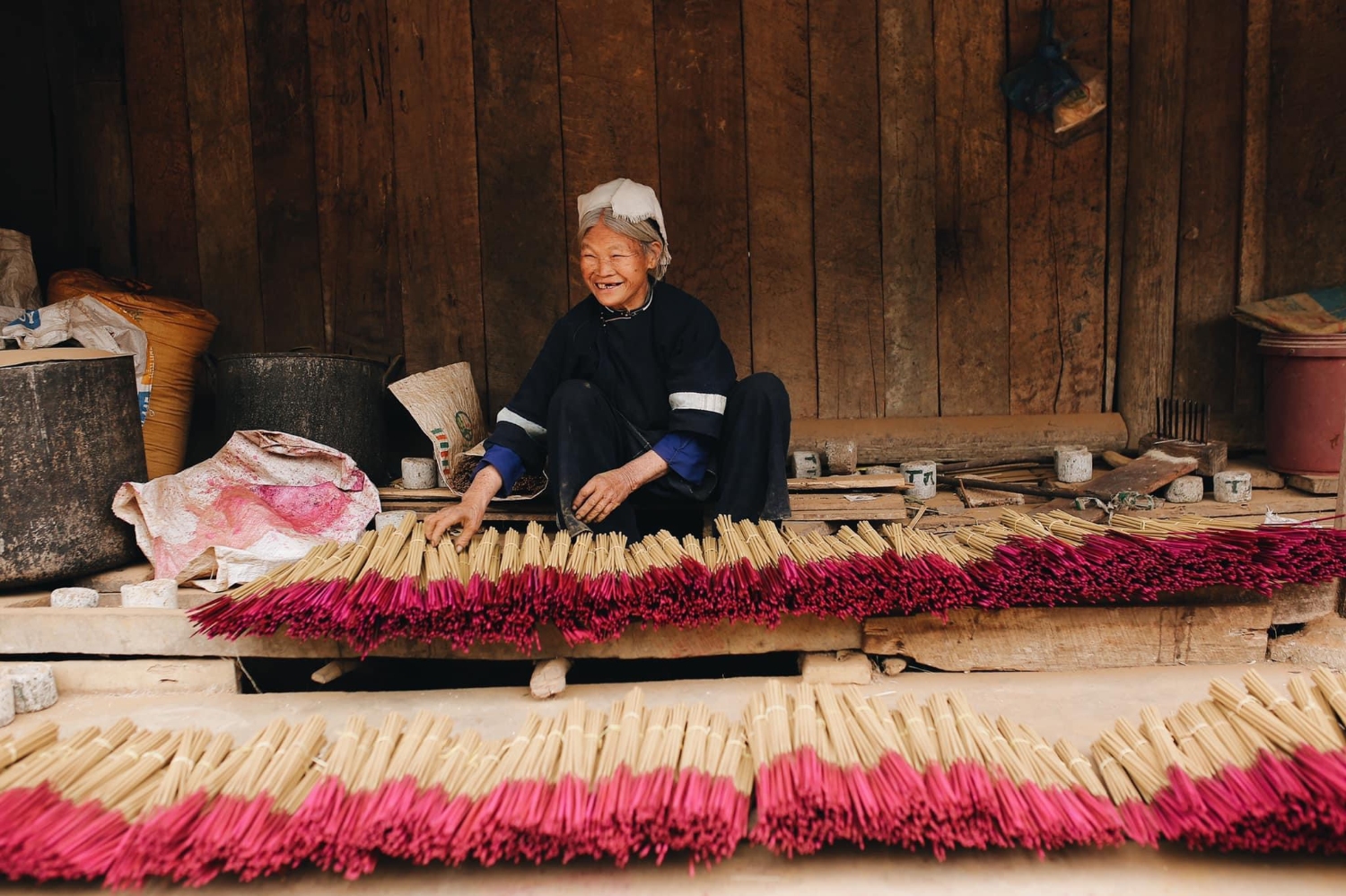
Being one of the traditional crafts, the spearhead of the economic development of the commune, incense-making has met spiritual purposes and increasingly developed in a sustainable and fast manner. Incense-making has contributed to the preservation and development of the traditional crafts in the commune, providing jobs to the local population. Currently, there are 48 households in Phja Thap making incense, the income from incense making accounts for 50% of a household’s total income. In addition to making incense, the villagers have also developed other services such as homestays or catering, etc. so that they have more sustainable sources of income, the family’s economic conditions have been improved, many households earn an income of more than 90 million VND per year.
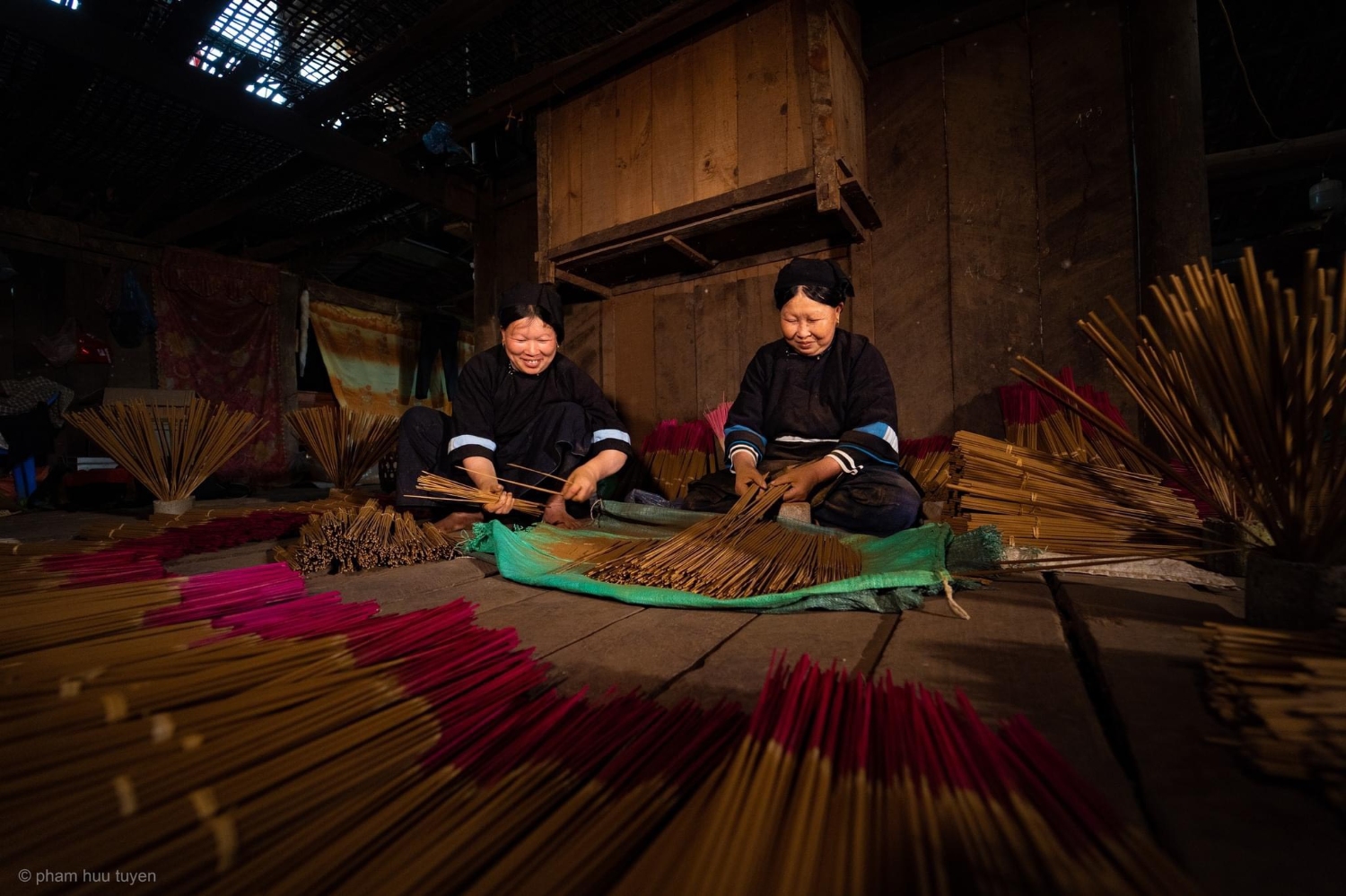
Traditional paper-making in spring
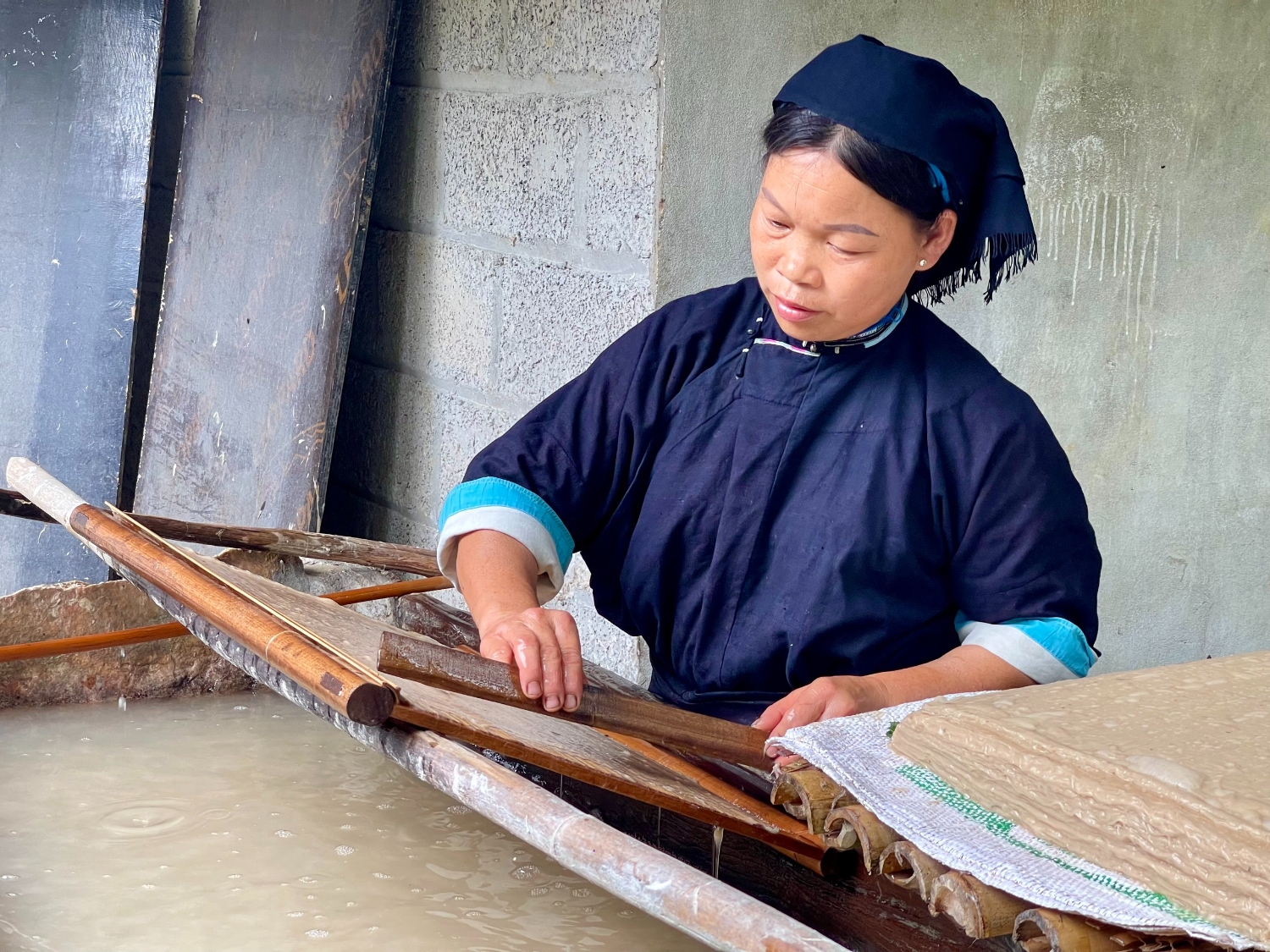
In Dia Tren village, only a few dozen households maintain the traditional paper-making craft; however, at the end of each year, the villagers are busy producing traditional papers, creating a hustle atmosphere of welcoming a new year. Via traders, their products are not only sold to customers in the province but also to nearby provinces.
Nong Thi Kinh, a villager who still practices the craft of traditional paper-making said that: “Because the traditional paper is spongy, light, durable, made from available natural materials and harmless to the environment, it is easy to sell the paper. Traditional paper is a typical product of Phuc Sen commune, which is used for spiritual purposes such as worshipping ancestors or in Cap Sac ritual (a ritual to mark the maturity of a Dao man), writing papers, or other purposes such as napkins. Especially, when being burned (joss papers burning), the traditional papers produce less ash and are easier to soar than normal joss papers. Moreover, due to the traditional techniques and free of chemicals, traditional paper is environmentally friendly and harmless to users’ health.
Thanks to the proper orientation, the traditional craft villages in Cao Bang province have been developing relatively stably, creating considerable sources of income. Besides, these cultural features have also created a distinct cultural identity, which attracts local people and tourists to visit and learn about them. With the objective of sustainable tourism development with the participation of communities, Cao Bang Province has focused on the preservation and promotion of traditional cultural values. Thereby, contributing to the preservation of cultural values of Non nuoc Cao Bang UNESCO Global Geopark, creating experiential opportunities for tourists.
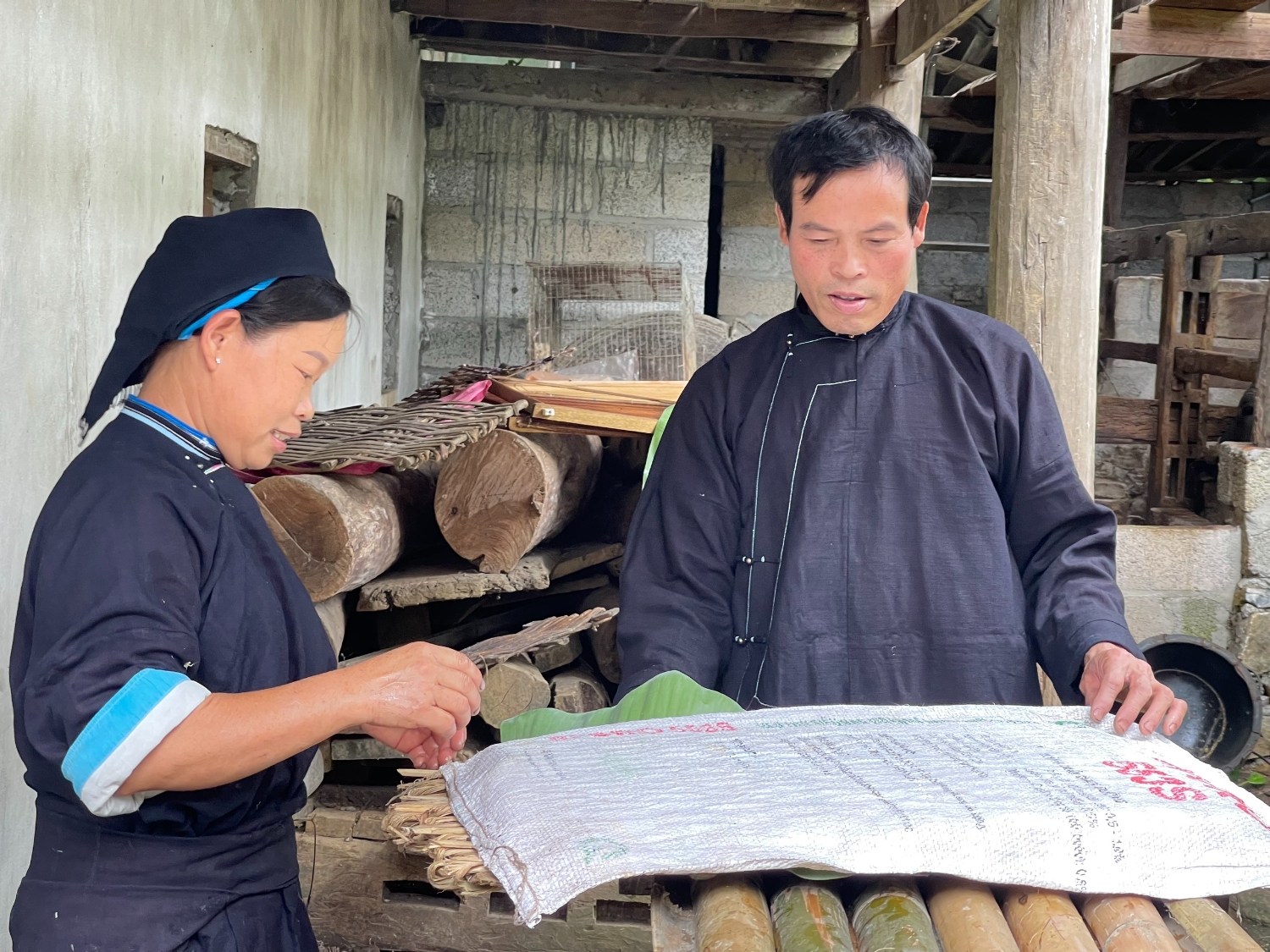
Another spring is coming with both joys and worries of the craft villagers. In order to keep traditional crafts alive and develop traditional products, besides their skillfulness and creative passion, the craft villagers need support in capital, branding and production linkage, etc. These will be the basis for the development of the craft villages in the coming years.
Source: Nguyet Anh
Reader Comments
Newer articles
Older articles


